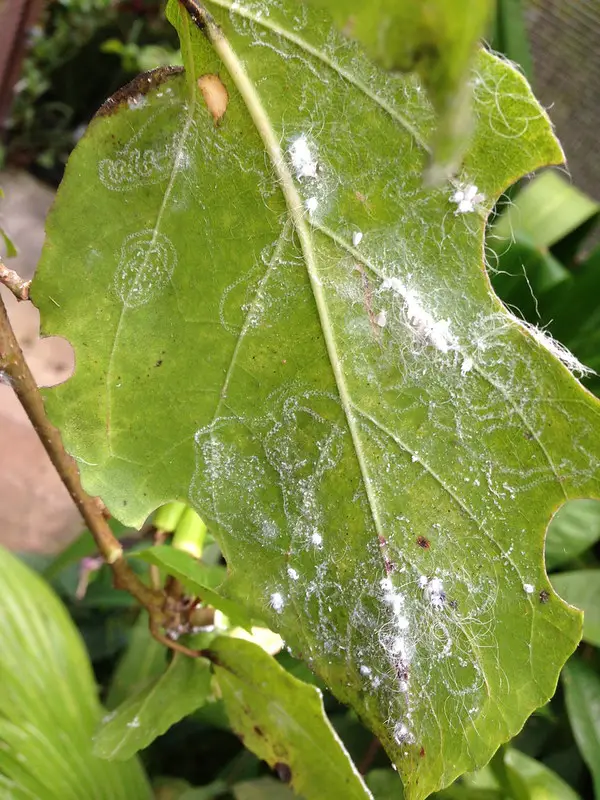Have you noticed a sticky substance on the leaves of your plants? It might be Whiteflies, which appear similar to a cloud of white, moth-like pests and cluster of white eggs. When you disturb whiteflies on your plants, they will fly and resemble a miniature snowstorm. The pests are very destructive for your garden and encourage mold and viral attacks. The article will describe the life cycle of white flies and methods to control them.

What Are Whiteflies?
Whiteflies, also known scientifically as “Aleyrodidae”, are small (1/16 inch long) moth like insects that are triangular shaped, have short antennas, and powdery white wings. They are often recognized as clusters underside of leaves or on stems. In the infancy stages, whiteflies look pale in color, are translucent , and can easily camouflage on leaves.
The Life Cycle Of Whiteflies
Whiteflies take approximately 25 days to develop from egg to adults at room temperature. Nymphs overwinter on the leaves of plants and adults lay pale yellow eggs, 200-400 at a time, in a circular cluster on the underside of leaves during late spring. In 5-10 days, the eggs will hatch and small crawlers are released and begin feeding on leaves.
The cycle repeats multiple times a year and produces colonies of whiteflies.
How To Identify Plant Damage From Whiteflies
Whiteflies infest more than 250 ornamental plants, fruits, and vegetables. Some of its favourite hosts are tomato, grape, cucumber, potato, poinsettia, squash, eggplant, cabbage, sweet potato, pepper, citrus and hibiscus.
They form a thick, crowded cluster-like appearance on the underside of leaves and suck up the plants sap. The pests feed on plants and make it extremely weak to carry on photosynthesis.
Both nymphs and adult flies feed on host plants and cause leaf yellowing, wilting, stunted growth and crop loss.
When a whitefly infestation occurs, plants become vulnerable and susceptible to viral and fungal disease. The damage leaves a honeydew-like film on the plants and provide a medium for black sooty mold to grow and further damage the plants.
How to Prevent and Control Whiteflies
Manual inspection is the first step to protecting your garden from whiteflies. Check for a sticky honeydew-like substance on the plant’s leaf surface and whiteflies on the underside of the leaves around the veins.
Careful not to disturb the flies otherwise they will fly off like a white snow cloud. You may find eggs or larvae underside of the leaves which is the beginning of a new generation of whiteflies. Also, attempt to prune off the infected parts of the plant.
After your inspection, you can use several methods to control whiteflies:
- Reflective mulches: Reflective aluminium mulches in the early season, especially for tomatoes and pepper. Light reflective from mulches make it difficult for the flies to find host plants and protect your vegetables and fruits.
- Biological control: Beauveria bassiana (entomopathogenic fungus) spray can be applied to the crops. The biological insecticide is effective against several resistance pests.
- Yellow sticky traps: The color of the traps naturally attract adult whiteflies to them and you’ll easily be able to get rid of them.
- Use hose water to wash off whiteflies from leaves and stems of the host plants. Afterwards, apply insecticidal soap spray on your plants in the afternoon. Repeat the process once a week to control the whiteflies infestation in your garden. Alternatively, after scattering the whiteflies you can use a vacuum cleaner to catch the pests in the early morning or in cold weather. Put the vacuum cleaner in a freezer for 24 hours packed in a plastic bag and get kill the flies.
- Natural predators such as ladybugs can be used to prey upon whiteflies. They will be helpful to get rid of eggs, nymphs and pupae of whiteflies. Release the ladybugs when the population of pest is low to medium to see effective results. You can easily buy ladybugs online..